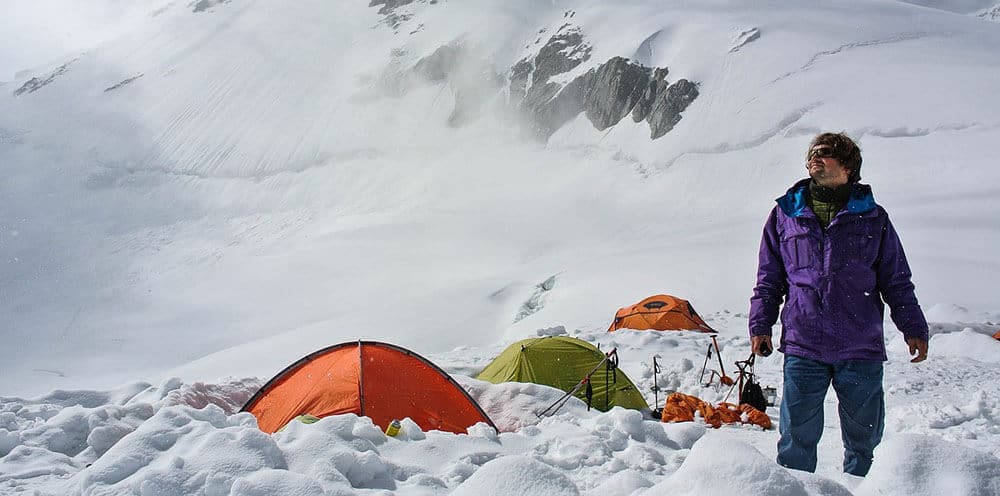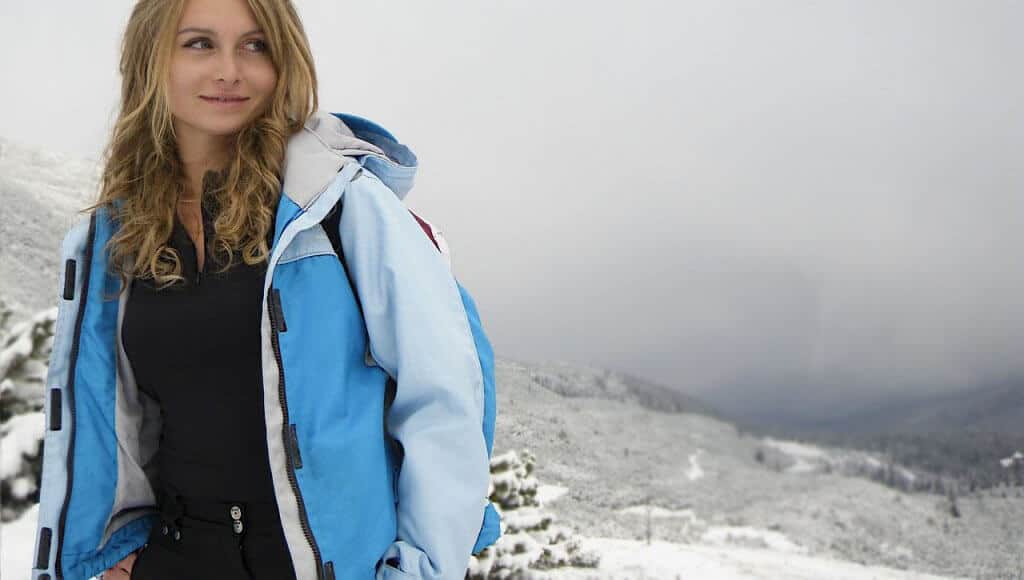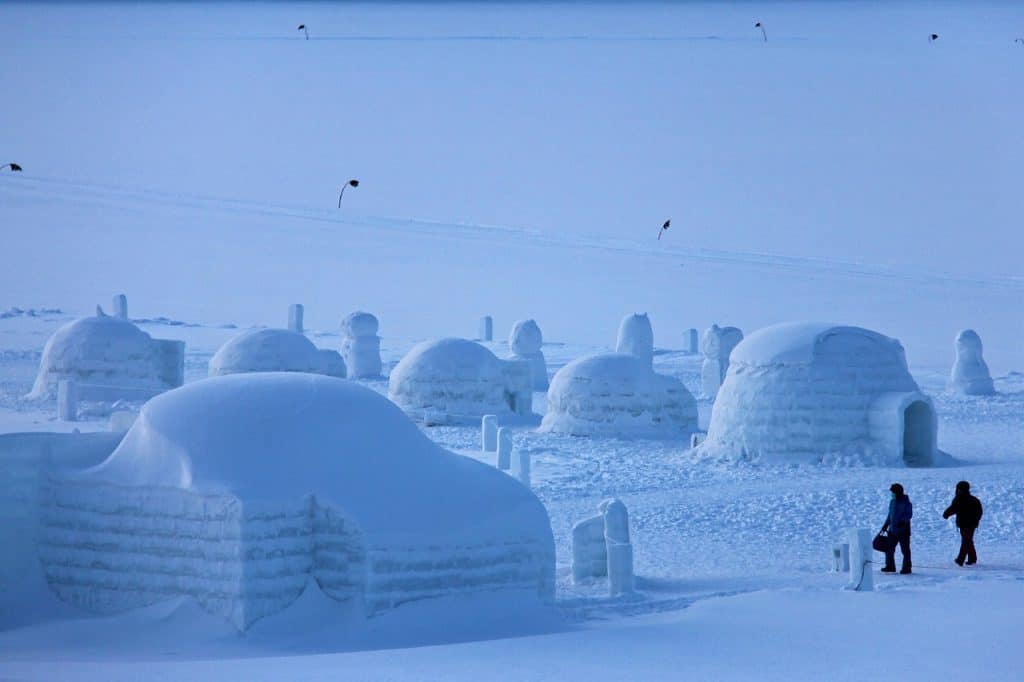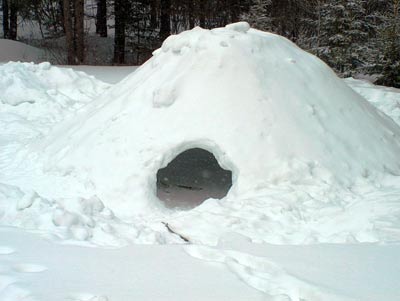
Winter camping is a unique experience that you need to have one or more times in your life. Sleeping in the beauty and peaceful wilderness surrounded by snow can give you some wonderful feelings and emotions.
It also can be hazardous and challenging, cold weather, icy roads, wind, and snow, which humans have struggled with for thousands of years to live through the cold season.
You need knowledge, proper planning, and the right gears to conquer them safely.
We are here to help. This article gives you an overall understanding of how to camp in the winter wilderness.
Table of Contents
Planning
Before you go, make clear your main goal for the trip. For many people winter camping is a unique experience as enjoying the loneliness and silence of nature with snow decorations. But be careful it is not an adventure. The cold weather makes it more dangerous than summer as hypothermia and frostbite can be a big threat, Nature shows no mercy to you if you are not well prepared.
Carefully choose the campsite, don’t go too far away if this is your first winter camping. Many factors should be taken into consideration: temperature, snow levels, wind speed, avalanche danger, safety of ice crossings, etc.
Take some time to investigate the weather conditions and the forecast of the following few days.
Buy or print the map of your campsite, plot out your route. Find out the emergency numbers in the target area.
Estimate and schedule your time, keeping in mind that it’s much slower for a lot of activities in winter(setting up tents, breaking camp, cooking….).
Planning is a good habit of any camping activities, it is especially important in winter because you are facing more problems. This is a chance and opportunity to get into the habit of camping planning which is also useful in summer.
Setting up Shelters
Shelters in the snow
The Inuit people living in the arctic regions invented the snow house shelter known as igloo, which is built up from blocks of hard snow. However, It is a permanent shelter and takes time to construct.
The other kind is quinzee, a Canadian snow shelter that is made from a large pile of loose snow, which is viable for most short time campers.
If you are interested in those shelters as your main camping goal, please find more information and details. Note that if you have no experience this can take you all day long without any progress. Also it is dangerous if the structure you build is not strong enough that it may collapse and bury you with snow.
For most beginner snow campers, a tent is a better choice.
Tent
It is recommended to use a 4-season tent(or winter tents), which are made to withstand intense weather conditions. Often they have less mesh and double-walled to hold warmth in.
If you want maximum warmth, an outer tent with an inner cocoon tent is a good choice. You can check our in depth review for the best insulated tent here.

Avoid flat tops, the heavy snow accumulated will make the tent collapse. Choose steeper walls that allow snow to fall off.
A waterproof rainfly can help the inner tent to reduce condensation. It also prevents the air flow around the tent by the additional layer that makes a much warmer space inside the tent.
Sometimes a 3 season one will also work if you don’t have a winter tent. But make sure it fits the weather conditions of your camping site and meets all the features we mentioned above.
Set Up your campsite:
- Clear the snow: clear out the snow to pitch your tent, when the temperature rises inside the tent the loose snow will melt that makes the ground wet and muddy.
- Build a wall: pack the snow around your tent to make a wall that reduces wind impact. Remember to leave some space for ventilation.
- Pitch up the tent: be patient, it needs more time in the cold weather.
- Stakes out: use stakes designed for snow to make sure the tent is steady enough to withstand the heavy wind.
Shake all the snow off your body before getting into the tent. because it will melt into moistures inside that makes you uncomfortable.
Sleeping bags
There are various kinds of sleeping bags designed for different purposes. Please investigate the lowest temperature carefully of your camping site and choose the proper sleeping bag accordingly.
An important factor of the sleeping bag is insulation types. Down insulation is lightweight and performs well in cold, but more expensive. Synthetic insulation offers solid performance at an affordable price.
Shape is a factor too. The mummy shaped sleeping bag is a little warmer than the rectangular shaped ones due to its compact space.
Many of the vendors have an explicit lowest temperature labeled in their product description. If you don’t want to dive into tech specific things just look at the temperature and choose your favorite one.
Also, using sleeping pads to insulate yourself from the frozen ground. It is not only cold to sleep directly on the ground but also wet because your body will heat and melt the solid snow or ice.
Foam pads or inflatables work well, keeping your night warm and dry.
Food & Cooking
It is a joy to eat hot food in the snowy wilderness. This is one of the most impressive things I remember after my first winter camping.
Bring stoves and fuel for cooking. You can also build a fire sometimes, but Firewood can be difficult to find in winter.
Don’t cook in the tent, it will produce carbon monoxide which is dangerous in a sealed space, also the water vapor leads to extensive condensation.
Your body needs a lot of energy to keep warm in the cold. Food like candy or bread are good sources of carbohydrates which is the primary energy form in our body. Meat is good, it has a lot of protein that is useful for building our body tissues, also it contains fats which can slowly break down into glucose that provides energy.
The advice is to bring more calorie-dense food and less meat. Avoid fresh food because it contains water and weighs a lot.
Instant oatmeal with hot milk is good for your breakfast. a hot drink makes your body warm up quickly in the cold morning.
Take short lunch breaks as the cessation of activity can lead you to getting cold. You can spend more time cooking for dinner since there are less activities when it is dark.
Melt snow using the stove to make water. It is healthier to drink boiled water as the bacteria is killed. Don’t eat snow directly, it needs a lot of energy to turn water from solid to liquid which is not good for your stomach and has a potential danger of hypothermia.
How to keep warm & Layering clothes
Keeping warm in the winter is crucial and you should pay more attention to it. You can achieve this by properly layering your clothes.
The key is to keep warm. but other factors like ventilation, wetness, light or heavy, and more, should also be considered because all of these contribute to the feeling of comfort.
Types of materials
Different types of clothing materials have individual characteristics that distinguish them from each other. For example, cotton is a bad idea for winter camping because it absorbs water which causes heat loss quickly, also it is much heavier than other materials.
Synthetic, plastic fiber like polyester doesn’t absorb water, the price is cheap too, but they are not so good at keeping warm.
Down is light and efficient, it also has the problem of getting wet. But it provides excellent warmth and is widely used in winter clothes.
Other fibers like Primaloft or Thinsulate, are light and thin, and also provide comparable warmth as the down feather. Those fibers don’t absorb water so you don’t need to worry about getting wet.
Layering Basics
You can have many layering tactics for different scenarios as an expert camper, but to reduce the complexity we can roughly categorize them into the following three layers which is sufficient for most cases.

Remember that considering the lowest temperature you are in, the thickness of the cloth can be different, choose the right one accordingly.
- Base layer: this is the underwear layer worn directly against the skin, because you can sweat the cloth needs to be hydrophobic that moves perspiration away from the body. fabrics like polyester or wool work well.
- Middle layer: this is the main layer that keeps your body warm, you can use a down jacket or synthetic insulated jacket. We recommend synthetics like thinsulate or primaloft, it is much thinner than down but keeps the same warmth.
- Outer layer: the outer layer should be windproof and at least water resistant. It is a shell that prevents you from wind, rain, and snow. It also needs the ability to ventilate so that perspiration generated from your body can escape.
You may not be wearing all the clothes throughout the day because the temperature is changing and also your activities varies.
As a rule of thumb, put on all your layers in the morning since the temperature is low and you also have little movements. You can take off some layers after breakfast as your activities gradually increase, strip down until you feel just cool, not chilled.
Add more layers at the end of day as the temperature drops.
What should I bring for winter camping / essential gears
As we have talked a lot in the previous sections, we list all the essential gears here for your convenience.
Tent: You’d better use a four season tent / winter tent. If you don’t have one, a three season tent with steep walls can also work.
Sleeping Bag: Use a sleeping bag that is rated a few degrees lower than the lowest temperature in your campsite.
Sleeping Pad: All season pads that have an R-value of 4.0 or higher are better.
Stoves and Fuel: Bring enough fuel, this is important because you don’t want to drink cold water in the freezing wild. You can also bring a backup stove in case of malfunctions.
Food and Drink: Take mostly dry food, Calorie-dense food. Avoid fresh food.
Clothes: Proper layer of clothes. Hats and mittens are also useful.
Other miscellaneous tools are also useful, like knives, flashlights, toilet papers, etc. We have a camping checklist you can refer to here. Although it is not prepared specifically for winter camping, many items mentioned there can still give you some hints on things that you may have forgotten.
Tips for winter camping
- Don’t run out of power: make sure your batteries are fully charged before starting out, the battery will drop quickly under cold weather. Keeping your cell phone always online is important, plus it is your main GPS device in modern days.
- Eat warm food: Don’t eat cold food because you have to warm them up using your body energy. The warm food gives you energy instead of stealing from you. Keeping your body warm is important in the cold weather.
- Insulate from the ground: Use sleeping pads under your sleeping bag. If possible you can use two to provide more insulation.
- Sleep with your face out of the bag: As you breathe, the moisture will accumulate inside the bag.
- Extra poles: Bring extra poles for your tent in case of pole breaks.
- Stow bottles upside down: This can help as the bottle tops are less likely to free shut since water freezes from the top down.
- Stay dry: wet clothes conduct heat quickly, which makes you feel cold, the best way is to avoid them.
- Sleep with your underwear: The more you wear the better insulated and the warmer you will be. It also keeps your body oils, sweat, and other things away from the sleeping bag.
- Urinate when you need: Just go for it or you will not get back to sleep, and your body will not waste energy to keep the fluid warm when the bladder is empty.
- Keep electronics warm: Low temperature can damage your electronics and is bad for the battery. Put it in the sleeping bag or a jacket close to your body.
Other resources
- https://www.princeton.edu/~oa/winter/wintcamp.shtml
- https://www.rei.com/learn/expert-advice/winter-camping.html
Keep Reading:

 CuteCamper
CuteCamper



